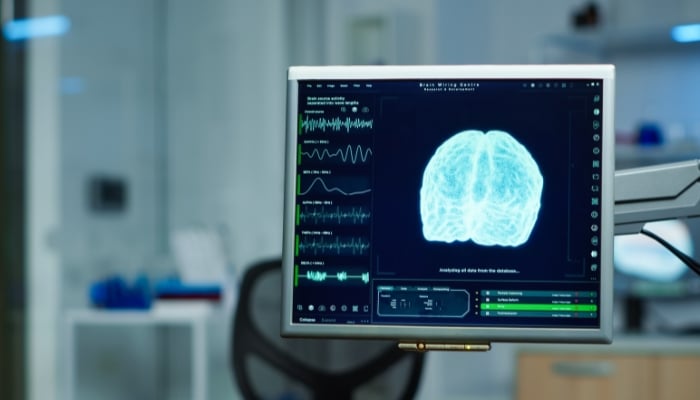4 min read
Understanding Parkinsonism: A Comprehensive Guide
Have you ever wondered about the mysteries of the human brain, particularly conditions like Parkinsonism? In this article, we’ll unravel the complexities of Parkinsonism, addressing the fundamental questions: What is Parkinsonism? And what are its various types? This journey into the brain’s workings is not just for scientists or doctors but for anyone curious about this condition. So, let’s dive into this intriguing world together!

What Exactly is Parkinsonism?
Parkinsonism refers to a group of neurological disorders that share similar symptoms to Parkinson’s disease, primarily affecting movement. These symptoms can include tremors, slow movement, stiffness, and imbalance. But what exactly causes these symptoms? The answer lies in the brain’s complex functioning and certain disruptions that occur in neurological processes.
What Are the Different Types of Parkinsonism?
Now, let’s address a crucial question: What are the types of Parkinsonism? Understanding the different forms of Parkinsonism is essential for recognizing how this condition can vary from person to person. These types include:
Primary Parkinsonism
This category is mainly characterized by Parkinson’s disease itself, which is the most recognized and common form. Parkinson’s disease is a progressive neurological disorder primarily affecting movement. It occurs due to the loss of nerve cells in a part of the brain called the substantia nigra, leading to a reduction in dopamine, a chemical vital for controlling movement.
Secondary Parkinsonism
Secondary Parkinsonism arises due to external factors. These can include:
- Medication-induced Parkinsonism: Certain medications, especially those used to treat psychosis and major psychiatric disorders, can cause Parkinsonism symptoms.
- Toxin-induced Parkinsonism: Exposure to certain toxins, like carbon monoxide or manganese, can lead to this form.
- Parkinsonism due to other neurological conditions: Diseases such as Wilson’s disease or strokes can sometimes manifest symptoms similar to Parkinson’s disease.
Atypical Parkinsonism
This group includes several rarer conditions that present with Parkinson-like symptoms but have distinct features and progressions. The most notable ones are:
- Multiple System Atrophy (MSA): This condition affects multiple systems in the body, including the nervous system. It has symptoms similar to Parkinson’s but also includes problems with blood pressure control, bladder function, and coordination.
- Progressive Supranuclear Palsy (PSP): Characterized by difficulties with balance, eye movement, and thinking, PSP tends to progress more rapidly than Parkinson’s disease.
- Other less common forms include Corticobasal Degeneration (CBD) and Dementia with Lewy Bodies (DLB).
How Can You Identify Parkinsonism Symptoms?
Identifying Parkinsonism early can be crucial for effective management. So, what should you look out for? Common symptoms include:
Tremors
One of the most recognizable signs of Parkinsonism is tremors, typically starting in one limb, often the hand or fingers. People may notice a back-and-forth rubbing of the thumb and forefinger, known as a pill-rolling tremor. These tremors are most prominent at rest and may decrease during movement.
Bradykinesia
Bradykinesia, or the slowness of movement, is a hallmark feature of Parkinsonism. This symptom is more than just moving slowly; it can manifest as a decrease in spontaneous and voluntary movement. Simple tasks may become time-consuming and difficult, and facial expressions may also reduce, leading to a mask-like appearance.
Muscle Stiffness
Muscle rigidity or stiffness can occur in any part of the body. This stiffness can be constant or may occur as spasms and can cause pain and limit the range of motion. The rigidity can also affect the facial muscles, leading to a decreased ability to express emotions through facial expressions.
Balance Problems
Balance issues and postural instability are common in Parkinsonism, particularly in its later stages. This symptom can significantly increase the risk of falls as individuals may have difficulty adjusting their posture to maintain balance. It’s important to note that in the early stages of Parkinson’s disease, this symptom might not be very pronounced.

What Is Involved in Diagnosing Parkinsonism?
Medical History and Symptoms
The first step typically involves a detailed review of the patient’s medical history and symptoms. Doctors will ask about the onset, duration, and progression of symptoms. They will also inquire about any family history of Parkinson’s disease or similar disorders, as well as any exposure to toxins or use of medications that could induce Parkinson-like symptoms.
Physical Examination
A thorough physical examination is crucial. Neurologists will look for the hallmark signs of Parkinsonism, such as tremors, bradykinesia (slowness of movement), muscle stiffness, and balance issues. They may conduct specific tests to evaluate motor function, muscle tone, gait, and coordination.
Response to Medication
In some cases, doctors may prescribe medication used to treat Parkinson’s disease, such as levodopa. If symptoms improve significantly with medication, it can be an indicator of Parkinson’s disease, a type of primary Parkinsonism.
Neuroimaging Tests
While there are no definitive tests for Parkinsonism, imaging tests like Magnetic Resonance Imaging (MRI) or Positron Emission Tomography (PET) scans can be helpful. These tests don’t diagnose Parkinsonism directly but are used to rule out other conditions that could cause similar symptoms, such as strokes or brain tumors.
Other Tests
In some instances, additional tests might be conducted to exclude other causes or to assess the overall neurological health of the patient. These can include blood tests, tests for cognitive function, and tests to evaluate the autonomic nervous system.
What Are the Treatment Options for Parkinsonism?
Treating Parkinsonism effectively involves a combination of strategies tailored to each individual’s symptoms and condition. While there’s no cure, these treatments aim to manage symptoms and improve quality of life. Here’s an overview of the primary treatment options:
Medications
Medications play a key role in managing the symptoms of Parkinsonism. The most common types include:
- Dopaminergic Medications: These are designed to increase dopamine levels in the brain or to mimic its actions. The most well-known medication is Levodopa, often combined with Carbidopa to reduce side effects and increase effectiveness.
- Dopamine Agonists: These mimic the effects of dopamine in the brain and can be used alone or in combination with Levodopa.
- MAO-B Inhibitors: These help prevent the breakdown of brain dopamine by inhibiting the enzyme monoamine oxidase B.
- Anticholinergics: These can help control tremors and rigidity, especially in younger patients.
- Amantadine: Originally an antiviral drug, Amantadine can provide short-term relief for early-stage Parkinsonism symptoms or be used alongside Levodopa in later stages.
Physical Therapy
Physical therapy is crucial for managing Parkinsonism, focusing on:
- Mobility: Exercises to improve walking, balance, and coordination.
- Flexibility and Strength: Stretching and strengthening exercises to reduce rigidity and maintain muscle strength.
- Posture and Balance: Techniques to improve posture and reduce the risk of falls.
Lifestyle Changes
Lifestyle adjustments can significantly impact the management of Parkinsonism:
- Regular Exercise: Aerobic exercises, Tai Chi, yoga, and stretching can improve overall mobility, balance, and quality of life.
- Healthy Diet: A balanced diet rich in fruits, vegetables, whole grains, and lean proteins can support overall health. Some patients also benefit from dietary adjustments to improve Levodopa efficacy.
- Sleep Hygiene: Ensuring adequate and quality sleep is crucial, as sleep disturbances are common in Parkinsonism.
Other Therapies
Depending on the individual’s symptoms and how they progress, additional therapies may be recommended:
- Speech Therapy: For addressing speech and swallowing difficulties.
- Occupational Therapy: To help with daily activities and adapting living spaces for safety and accessibility.
- Mental Health Support: Counseling or therapy to cope with the emotional aspects of living with a chronic condition.

How Does Research Influence Parkinsonism’s Future?
What does the future hold for Parkinsonism? Ongoing research is crucial. Scientists are continuously exploring new treatments, potential causes, and ways to improve the quality of life for those affected. Your understanding and awareness can make a difference in this journey.
Conclusion: Your Journey with Parkinsonism
As we reach the end of our exploration into Parkinsonism, it’s important to recognize the power and significance of understanding. Knowledge about Parkinsonism is not just beneficial for those directly affected by the condition but also enriches our society with greater awareness and empathy.
If you are a patient grappling with Parkinsonism, remember that you are not alone in this journey. The advancements in medical science and the supportive community around you are valuable resources. Embrace them, and be an active participant in managing your condition. Your resilience and courage in facing Parkinsonism are inspiring.
For caregivers and family members, your role is immensely important. Your support, understanding, and compassion significantly impact the well-being of your loved ones. By educating yourselves about Parkinsonism, you are better equipped to provide the care and empathy that can make a world of difference.
And if you’re someone who’s simply seeking to learn more about Parkinsonism, your curiosity and willingness to understand this condition contribute to a more informed and compassionate world. Your interest helps break down stigmas and fosters a more inclusive environment for those dealing with Parkinsonism.
The field of neurology is continually evolving, with new discoveries and developments emerging regularly. Stay informed and engaged with these advancements, as they bring hope and new possibilities for managing and understanding Parkinsonism.
In conclusion, each one of us has a role to play in this journey with Parkinsonism. Whether you are directly affected, supporting someone who is, or simply learning about the condition, your involvement is valuable. Together, through shared knowledge and empathy, we can face the challenges of Parkinsonism and contribute to a more understanding and supportive society.
Stay tuned for more insights and developments in the fascinating and ever-evolving field of neurology!
